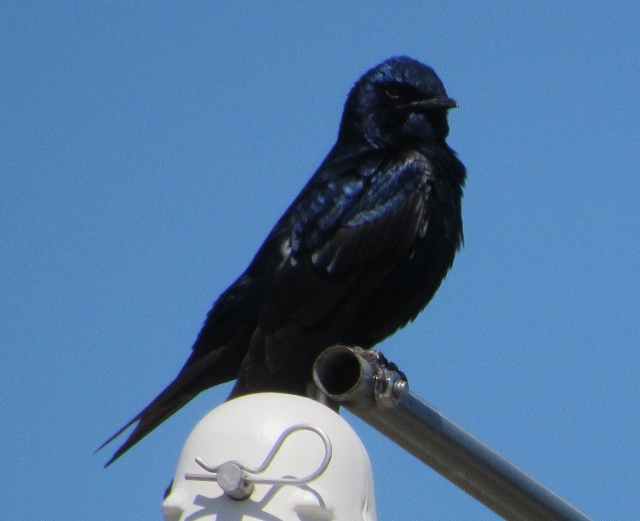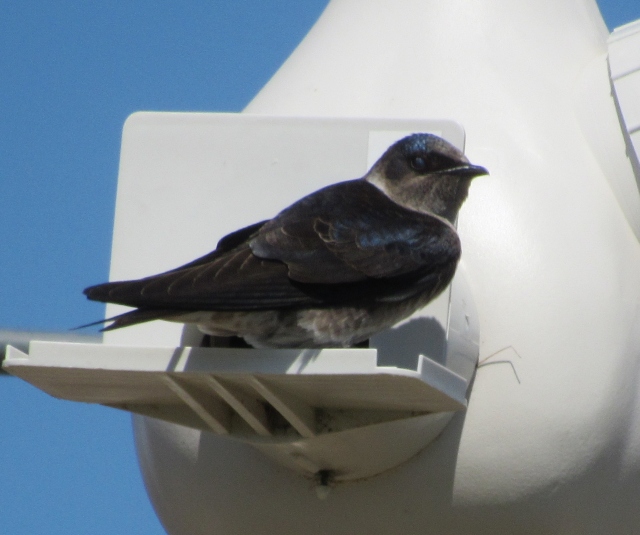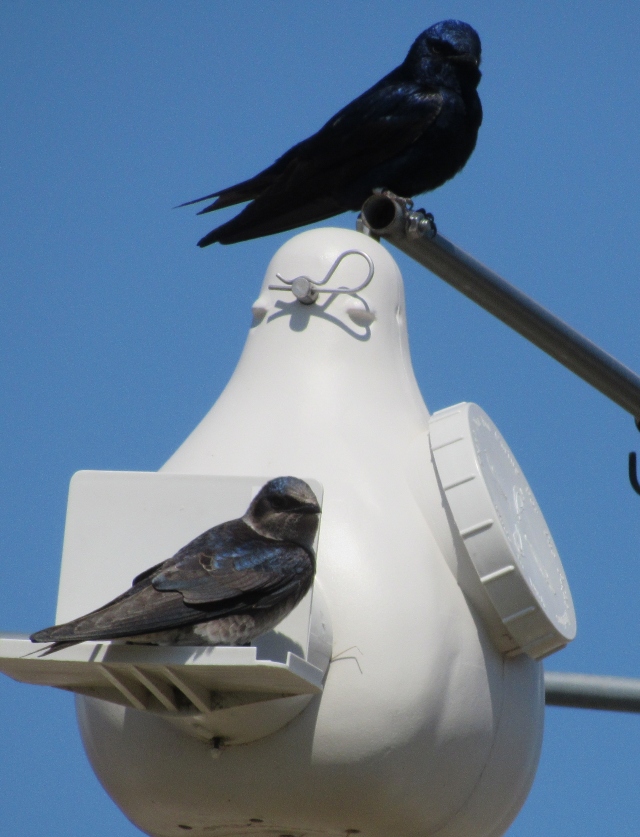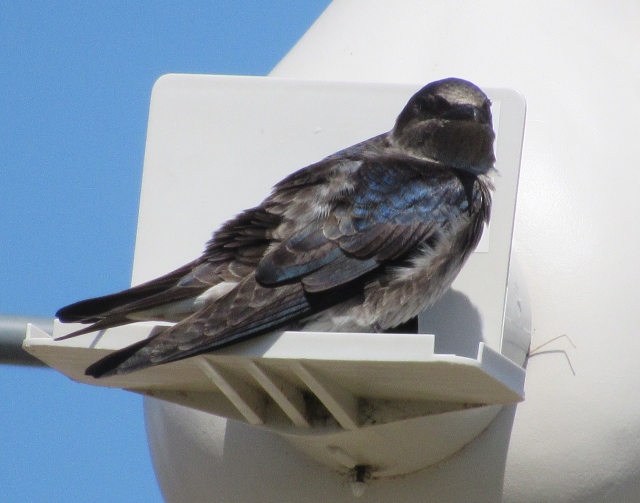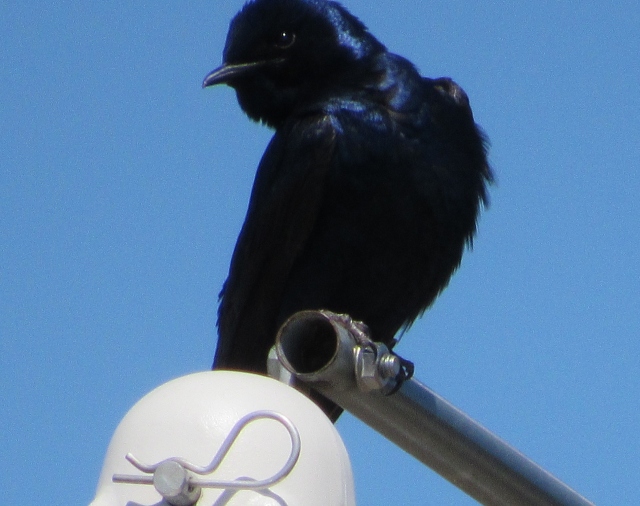I was able to observe several of these remarkable birds while visiting Ottawa National Wildlife Refuge in northwest Ohio. They are the largest swallow in North America. Despite their name, Purple Martins are not truly purple. The dark blackish-blue feathers have an iridescent sheen caused by light refraction, giving them a bright blue to navy blue or deep purple appearance. Females are not as shiny with some gray on the head and chest.
Purple Martins are considered synanthropic, meaning they have developed an association with humans over time and benefit from living in close proximity to them. Native Americans hung up empty gourds for these birds before Europeans arrived in North America. Purple Martins in eastern North America now nest almost exclusively in birdhouses, but those in the West use mostly natural cavities.
This birds is insectivores, primarily feed by hawking, a strategy of catching insects in the air during flight. A colony of these birds may catch and eat several hundred beetles, horseflies, grasshoppers, dragonflies, and wasps each day. Purple Martins not only get all their food in flight, they also get all their water that way too. They skim the surface of a pond and scoop up water with their lower bill.
Purple Martins suffered a severe population crash in the 20th century widely linked to the release and spread of European Starlings in North America. European Starlings and House Sparrows compete with these birds for nest cavities. Where Purple Martins once gathered in the thousands, by the 1980s they had all but disappeared. The Purple Martin Conservation Association is a nonprofit organization dedicated to the conservation of Purple Martins.
These birds are long-distance migrants, wintering in the Amazon Basin along waterways and wetlands. Graceful in flight, musical in its pre-dawn singing, the Purple Martin is one of our most popular, well-liked birds.

